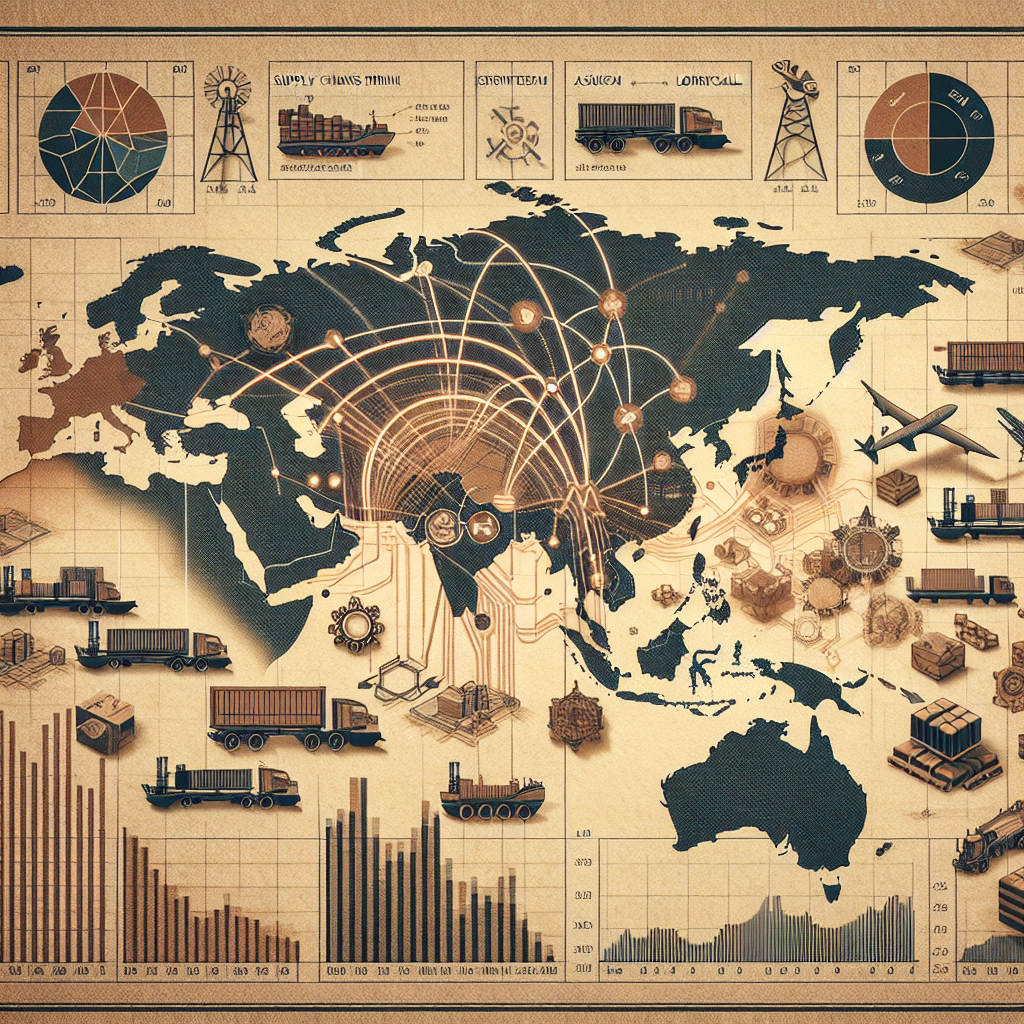Deglobalization Trends: Impact on Asian Supply Chains and Trade Flows

In recent years, the world has witnessed a significant shift in global trade dynamics, primarily driven by deglobalization trends. This phenomenon, characterized by a reduction in international trade and investment, is reshaping Asian supply chains and trade flows. As countries reassess their economic strategies in light of geopolitical tensions, pandemics, and environmental concerns, understanding the implications of deglobalization becomes crucial for businesses and policymakers alike. This article delves into the impact of deglobalization on Asian supply chains, exploring the challenges and opportunities that arise in this evolving landscape.
Understanding Deglobalization: A New Economic Paradigm
Deglobalization refers to the process of diminishing interdependence and integration between countries, particularly in trade and investment. This trend has gained momentum due to several factors:
- Geopolitical Tensions: Rising nationalism and trade wars, particularly between the U.S. and China, have led to increased tariffs and trade barriers.
- Supply Chain Vulnerabilities: The COVID-19 pandemic exposed the fragility of global supply chains, prompting companies to rethink their sourcing strategies.
- Environmental Concerns: Growing awareness of climate change is pushing businesses to adopt more sustainable practices, often requiring localized supply chains.
According to a report by the McKinsey Global Institute, global trade growth has slowed to an average of 3% per year since 2019, compared to 7% in the previous decade. This slowdown is indicative of the broader deglobalization trend affecting economies worldwide.
The Impact on Asian Supply Chains
As one of the most interconnected regions in the world, Asia is experiencing profound changes in its supply chains due to deglobalization. Here are some key impacts:
1. Shift Towards Regionalization
Many Asian countries are increasingly focusing on regional trade agreements to bolster their economies. For instance, the Regional Comprehensive Economic Partnership (RCEP), which includes 15 Asia-Pacific nations, aims to enhance trade and investment among member countries. This shift towards regionalization allows countries to reduce reliance on distant markets and mitigate risks associated with global supply chain disruptions.
2. Increased Production Costs
As companies move towards localized production to avoid supply chain disruptions, they often face higher production costs. For example, a study by the Asian Development Bank found that relocating manufacturing closer to home can increase costs by up to 20%. This increase can affect pricing strategies and profit margins, compelling businesses to innovate and find efficiencies.
3. Technological Advancements
Deglobalization is also driving technological innovation in supply chains. Companies are investing in automation, artificial intelligence, and blockchain technology to enhance efficiency and transparency. For instance, a report by Deloitte indicates that 79% of companies are planning to invest in digital supply chain technologies to improve resilience and adaptability.
Real-World Examples of Deglobalization in Action
Several companies have already begun adapting to the deglobalization trend, showcasing innovative strategies to navigate the changing landscape:
Case Study: Apple Inc.
Apple has been diversifying its supply chain by increasing production in countries like India and Vietnam. This strategy not only mitigates risks associated with reliance on China but also aligns with the Indian government’s “Make in India” initiative, which encourages local manufacturing.
Case Study: Toyota Motor Corporation
Toyota has also shifted its focus towards regional supply chains, particularly in Southeast Asia. By establishing production facilities closer to key markets, Toyota aims to reduce lead times and enhance responsiveness to local demand.
Addressing Common Misconceptions about Deglobalization
A common misconception about deglobalization is that it signifies a complete withdrawal from global trade. In reality, deglobalization does not mean the end of globalization; rather, it represents a recalibration of trade relationships. Countries are not abandoning international trade but are instead seeking to create more resilient and sustainable supply chains.
“The future of global trade will not be about isolation but about strategic partnerships that prioritize resilience and sustainability.” – Dr. Jane Smith, Economist
Conclusion: Navigating the Future of Asian Trade Flows
As deglobalization trends continue to reshape Asian supply chains and trade flows, businesses must adapt to this new economic paradigm. By embracing regionalization, investing in technology, and fostering strategic partnerships, companies can navigate the challenges and seize the opportunities presented by this evolving landscape. How will your organization respond to the changing dynamics of global trade? The future of your supply chain may depend on it.





